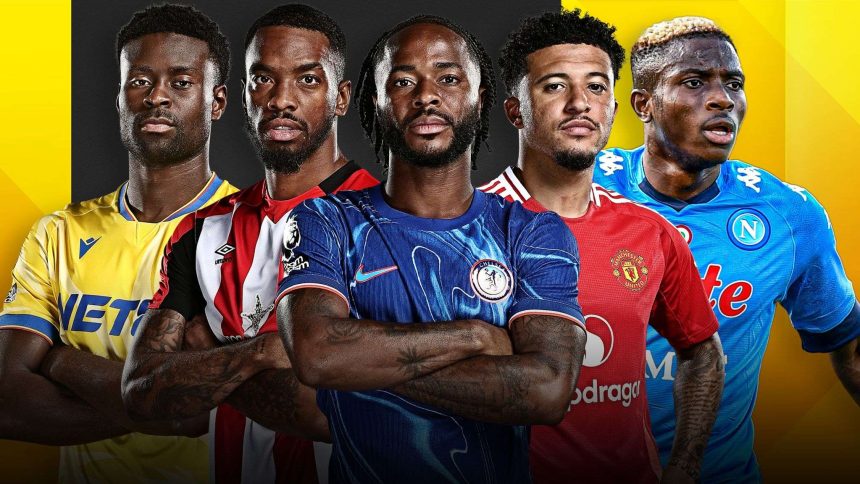As the transfer deadline looms in the English Premier League, clubs are engaged in a frantic race — not just for players, but for data, simulations, and digital certainty. While fans wait for surprise signings, backroom teams are locked in front of screens, running algorithms, scanning biomechanical profiles, and simulating tactical integrations.
Gone are the days of gut instinct alone. In today’s Premier League, signing a player is as much about machine learning as it is about match footage. With transfer fees skyrocketing and performance risks growing, clubs are investing heavily in digital tools to make smarter, faster, and more financially sound decisions.
The New Transfer Toolkit
Behind every major signing is a quiet army of analysts, coders, and data engineers — and their tools.
1. AI-Powered Scouting Platforms
Platforms like Wyscout and Scout7 have become indispensable in identifying talent. These systems aggregate thousands of hours of match footage and performance data from leagues around the world, offering position-specific insights that go beyond what traditional scouts can see. Clubs use these tools to quickly generate shortlists of players based on specific tactical needs or gaps in their squad.
2. Injury Prediction & Load Monitoring
Injuries are the hidden cost of bad transfer decisions. With tools like Catapult Sports and Zone7, clubs now use wearables and historical match data to assess a player’s likelihood of sustaining injuries in a new league or system. This tech has become crucial in assessing high-risk signings — particularly those with existing fitness concerns.
3. Contract and Market Analytics Software
Platforms such as TransferRoom allow club executives to simulate contract scenarios in real time, evaluating how a new signing might affect squad balance, salary caps, or resale value. In high-pressure transfer periods, these tools reduce negotiation errors and allow legal and finance teams to act quickly.
4. Fan Sentiment and Commercial Impact Analysis
Beyond the pitch, players are also brands. Tools like Zoomph and HypeAuditor allow clubs to estimate how much social media traction or commercial appeal a signing might bring. This is particularly useful when signing international stars or controversial figures whose impact off the pitch could be just as important.
5. Tactical Simulation & Virtual Reality
VR platforms such as Rezzil are increasingly used to evaluate how well a player might adapt to a team’s tactical setup. Before deals are finalized, players may be invited to participate in closed-door VR simulations that assess their responsiveness in game scenarios aligned with the club’s playbook.
Why It Matters
These tools aren’t just novelties — they’re rapidly becoming essential. In an era of Financial Fair Play, multi-million-pound errors can cripple clubs. Data-backed decision-making allows teams to reduce uncertainty, protect their investments, and, crucially, compete with clubs that may have larger transfer budgets.
Brentford, for instance, has long embraced a “Moneyball” approach, using data to find undervalued players and flipping them for significant profits. Manchester City, meanwhile, is rumoured to use machine learning to assess injury profiles before pushing final deals — a move that helped them avoid expensive setbacks in past windows.
A Shift in Power
The increased reliance on technology is also shifting the power balance inside clubs. Tech-savvy analysts and sports scientists now sit at the table with coaches and directors of football. Decisions are no longer made solely on charisma or traditional scouting wisdom.
Yet, with all this innovation, there are challenges. The pressure to act quickly can lead to overreliance on incomplete data, especially with last-minute deals. Human error can still creep in — only this time, it might be in the form of an overlooked variable in an algorithm or a misinterpreted stat.
As the window shuts, fans will speculate on who “won” the market. But the true winners might be the clubs whose digital departments helped them secure the right player, at the right time, for the right price.
In football’s new age, every transfer is a data gamble — but those with the best tech are stacking the odds in their favour.
Talking Points
Football Transfers Are Now Digital Warfare. What we’re seeing is a radical transformation of how elite football clubs do business. Transfer windows are no longer ruled by agents and coaches alone — they’re run by coders, data scientists, and digital platforms.
AI scouting tools, tactical simulations, and injury risk algorithms now have more influence than a coach’s “gut feeling.” If you don’t have tech, you’re behind. Period.
Africa’s Football Ecosystem Must Evolve — Or Stay Exploited. Let’s be blunt: many African clubs and national teams still rely on outdated scouting methods, little to no data analytics, and weak medical assessments.
While European clubs are evaluating 16-year-olds with predictive injury tech, we still see promising African talent burning out by age 23 — and we wonder why. Africa exports raw talent, but fails to apply the science that could preserve, grow, and profit from it locally.





